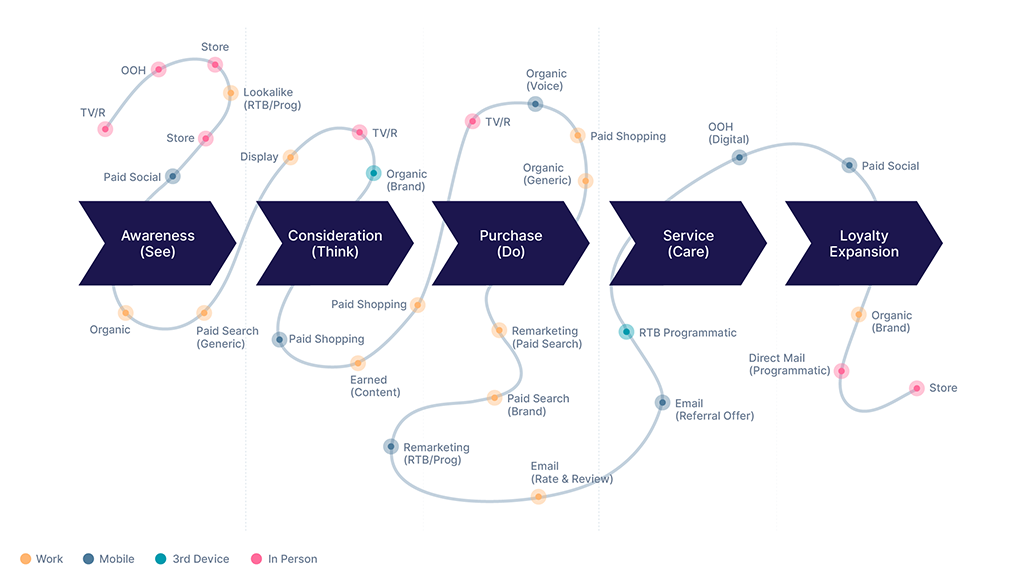How to Fix Inaccurate Website Analytics

It probably isn’t surprising to any of us to learn that marketers leave money on the table. It’s a concern that many in the industry have had for along time. But research by IDG has highlighted that the fact that 9 out of 10 marketers indicate it is happening because they have not been able to harness the type of website analytics needed to properly assess the effectiveness of their marketing activity and pivot accordingly.
However, for the lucky ones that do have access to effective analytics capabilities the rewards are significant – as they can expect to see an improvement in spending efficiency of between 20% and 40%.
So, getting your analytics right really matters. In terms of impact on revenue and ROI.
Existing approaches to analytics aren’t cutting it
Based on the findings above, the business and marketing rationale for better analytics is fairly clear.
However, unfortunately, the evidence is that shortcomings in some of the most commonly used analytics packages on the market from players like Adobe and Google are creating real problems in terms of the nature and quality of the analysis they provide.
For example, when analytics platforms, including for example GA 360, have a hard time tracking every source of traffic that lead to a conversion, it typically gets dumped into the “Direct” channel. This means that the campaigns you’re running aren’t getting the credit that they deserve. And neither are you!
Add to that the fact that the default attribution model for GA is Last-Click, which is a complete oversimplification where 100% of the credit for conversion is given to the last marketing engagement, and you begin to understand the shortcomings in existing approaches at an outline level.
But there are also deeper issues with the way data is collected and analysed including:
- The poor quality of data inputs
One of the central issues for marketers who use Google Analytics, for example, is the poor underlying data that is generated for analysis.
At the heart of their approach is a pixel-plus cookie-based approach which is essentially predicated on measuring a device accessing a specific web property and not on painting a picture of an individual who is highly likely to be on a complex, multi-channel and multi device journey.
The result? This approach does a particularly poor job of attribution – in fact our own work with customers shows that it typically generates data that is an incredible 80% incorrect in attribution terms. - Channel based data silos
In reality many marketing teams, whether in-house or external agency – or a combination of both – are typically organized around individual channel lines. In fact research by Experian found that less than 30% of marketers work in fully integrated teams.
What that means in practice is that no-one really has a “single source” analytics view of the impact of all media channels and the wider customer journey. Which in turn means that individual channels like social, search, programmatic and outdoor are all cobbling together their own, inward focusing analytics and unfortunately can often lead to over-reporting of media effectiveness and overstating of contribution to revenue and ROI. - Inability to integrate wider customer journey data
Lastly, existing solutions analytics like GA are holding marketers back from a key strategic objective – to help them effectively “see” right across the customer journey. And effectively analyse ALL of the touchpoints that have an impact on conversion and revenue.
From early stage, often hard to track initial research influenced on channels like social and organic search right through to lower funnel activity like paid.
What does this looks like in practice?
To better illustrate our point, let’s take a look at a simplified example of a user buying journey and how an existing solution like Google Analytics evaluates things.
A user first discovers your product through a paid ad on Instagram. Rather than immediately making a purchase, they spend a few days considering your product and conducting more research online, which includes arriving at your site from an organic search engine listing.
Feeling compelled by your web content, they decide to make a conversion and type your product into Google to find the right page. They click on the paid ad that appears at the top of the search results and go on to make a purchase.
According to Google Analytics, all the credit for this journey lies with PPC with none for Paid Social or Organic Search. The initial Instagram post and the content the user came across in their research stage are not credited at all.
It simply doesn’t reflect the reality of what is happening on the ground – its skewed in analysis terms. And if this is used to assess media effectiveness and allocate spend going forward then it is going to skew the impact and returns too.
Which is why a new, more effective approach to attribution is needed.
A more effective approach to analytics and attribution
So, in the face of the issues outlined above, how do you ensure that your attribution is really fit for purpose?
At a core level, it is essential that your approach enables you to:
- leverage the latest techniques in Machine Learning and AI to overcome the cookie/pixel related issues inherent in existing analytics packages to effectively “rebuild” your data from the ground up
- implement a visit-level attribution model to assign a value to each and every touchpoint right across each individual customer journey

- impact revenue by helping you move budget from channels that aren’t contributing to ones that drive conversions
- start driving growth and ROI by focusing time, money and effort into the activities in your marketing mix that will produce more sales and acquire new customers for your business.
Discover how to solve your challenges with effective attribution
We’ve created six Marketing Attribution Use Cases that explore why effective marketing attribution is key to solving a number of challenges faced by today’s marketers: from justifying marketing spend to getting more customers for less. To learn more, download the eBook below.
Marketing Attribution Use Cases
Own your marketing data & simplify your tech stack.
Have you read?
Chrome’s announcement on dropping cookie opt-in last month closed the door on a 5 year saga for marketers. But what is the landscape like in 2025 for cookie-based measurement?
Generative AI is transforming the way that marketers plan and assemble content for their Paid Ads. As big platforms like Google, Meta and TikTok increasingly build the tools needed to...
In a surprising move that has sparked heated debate, Mark Zuckerberg announced on his Instagram that Meta will be reducing its levels of censorship and in particular fact-checking on its...



